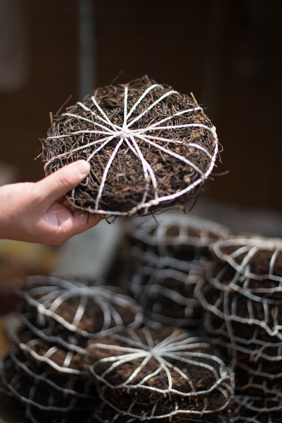|
Warabi Mochi 1
Warabi can have several meanings, including: * Warabi, Saitama, a Japanese city *Monjon, a type of rock-wallaby also called "warabi" *Bracken Bracken (''Pteridium'') is a genus of large, coarse ferns in the family (biology), family Dennstaedtiaceae. Ferns (Pteridophyta) are vascular plants that have alternating generations, large plants that produce spores and small plants that produ ... (''warabi''), Japanese bracken fern * Warabimochi, a wagashi traditionally made from warabi and served with kinako and kuromitsu * ''Warabi'', a ''Momi''-class destroyer commissioned in 1921 and lost in collision with the light cruiser ''Jintsū'' off Cape Miho in 1927 {{disambig ... [...More Info...] [...Related Items...] OR: [Wikipedia] [Google] [Baidu] |
Warabi, Saitama
is a city located in Saitama Prefecture, Japan. , the city had an estimated population of 75,697 in 39,563 households and a population density of 15,000 persons per km². The total area of the city is . Warabi has the smallest area of any municipality in Japan, and highest population density outside of the special wards of Tokyo. Geography Warabi is located southeastern part of Saitama Prefecture, bordering Saitama City in the north, Toda in the west, and Kawaguchi in the east. The city area is in the Arakawa lowland and averages 4.8 meters above sea level. Land use mainly consists of residential areas. Surrounding municipalities * Saitama Prefecture is a landlocked prefecture of Japan located in the Kantō region of Honshu. Saitama Prefecture has a population of 7,338,536 (1 January 2020) and has a geographic area of 3,797 km2 (1,466 sq mi). Saitama Prefecture borders Tochigi Prefecture ... ** Kawaguchi ** Toda ** Saitama Climate Warabi has a humid subtropical clima ... [...More Info...] [...Related Items...] OR: [Wikipedia] [Google] [Baidu] |
Monjon
The monjon (''Petrogale burbidgei'') is the smallest species of rock-wallabies (''Petrogale'') and is found in north-west Australia. They are restricted to a small area of the Kimberley region and on nearby islands in the Bonaparte Archipelago. Common names also include Burbidge's rock-wallaby and Burbidge's rock-weasel.Strahan, Ronald, ''Mammals of Australia'' (1995) p. 368 Taxonomy The monjon is a small species of macropod placed in the genus ''Petrogale'' (the rock-wallabies). The first published description of the species was in 1978, based on specimens collected and reviewed by D. J. Kitchener and G. Sanson. The type specimen is a female that weighed 1400 grams, shot by Kitchener in a sandstone crevice during an evening in November, 1976, The location of his collection was the Mitchell Plateau, near to a site named Crystal Creek. The animal was carrying a baby in its pouch, weighing around 50 g and without fur. Other specimens were obtained at the Mitchell Plateau, a ... [...More Info...] [...Related Items...] OR: [Wikipedia] [Google] [Baidu] |
Bracken
Bracken (''Pteridium'') is a genus of large, coarse ferns in the family (biology), family Dennstaedtiaceae. Ferns (Pteridophyta) are vascular plants that have alternating generations, large plants that produce spores and small plants that produce gamete, sex cells (eggs and sperm). Brackens are noted for their large, highly divided leaves. They are found on all continents except Antarctica and in all environments except deserts, though their typical habitat is moorland. The genus probably has the widest distribution of any fern in the world. The word ''bracken'' is of Old Norse origin, related to Swedish ''bräken'' and Danish ''bregne'', both meaning fern. In the past, the genus was commonly treated as having only one species, ''Pteridium aquilinum'', but the recent trend is to subdivide it into about ten species. Like other ferns, brackens do not have seeds or fruits, but the immature fronds, known as ''fiddleheads'', are sometimes eaten, although some are #Toxicity, thought ... [...More Info...] [...Related Items...] OR: [Wikipedia] [Google] [Baidu] |
Warabimochi
is a wagashi (Japanese confection) made from warabiko (bracken starch) and covered or dipped in ''kinako'' ( sweet toasted soybean flour). It differs from true ''mochi'' made from glutinous rice. It is popular in the summertime, especially in the Kansai region and Okinawa, and often sold from trucks, similar to an ice cream truck in Western countries. Warabimochi was one of the favorite treats of Emperor Daigo. Today, warabimochi is frequently made with katakuriko (potato starch) instead of bracken starch due to cost and availability. Kuromitsu syrup is sometimes poured on top before serving as an added sweetener. File:Kurumi mochi.jpg, ''Kurumi mochi'' with walnuts File:Warabi mochi 1.jpg, Warabimochi as sold in a supermarket See also *Bracken Bracken (''Pteridium'') is a genus of large, coarse ferns in the family (biology), family Dennstaedtiaceae. Ferns (Pteridophyta) are vascular plants that have alternating generations, large plants that produce spores and small ... [...More Info...] [...Related Items...] OR: [Wikipedia] [Google] [Baidu] |
Japanese Destroyer Warabi (1921)
The Japanese destroyer was one of 21 s built for the Imperial Japanese Navy (IJN) in the late 1910s. The ship was sunk on August 24, 1927 in a collision with the cruiser off Miho Bay, and was struck from the naval list on September 15, 1927. Design and description The ''Momi'' class was designed with higher speed and better seakeeping than the preceding second-class destroyers. The ships had an overall length of and were between perpendiculars. They had a beam of , and a mean draft of . The ''Momi''-class ships displaced at standard load and at deep load.Jentschura, Jung & Mickel, p. 137 ''Warabi'' was powered by two Parsons geared steam turbines, each driving one propeller shaft using steam provided by three Kampon water-tube boilers. The turbines were designed to produce to give the ships a speed of . The ships carried a maximum of of fuel oil which gave them a range of at . Their crew consisted of 110 officers and crewmen.Watts & Gordon, p. 260 The main armament o ... [...More Info...] [...Related Items...] OR: [Wikipedia] [Google] [Baidu] |
